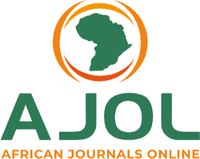CHARACTERIZATION OF HETEROGENOUS CATALYST PRODUCED BY PHYSICAL ACTIVATION OF Cocos nucifera SHELL WASTE
DOI:
https://doi.org/10.56892/bima.v7i02.%201.463Keywords:
Activation, catalyst, Coco nucifera, shell, wasteAbstract
Heterogeneous catalytic transesterification has several advantages over the homogeneous catalytic transesterification, including easy separation of biodiesel from glycerol, catalyst recycling/reuse, less energy requirement, and minimum consumption of water. In this study, the effect of temperature on the percentage yield of catalyst produced, effect of pH, Fourier Transform Infrared analysis, morphology, ash content, moisture of catalyst produced by both physical and chemical activation of Cocos nucifera shell was studied. The spectra for Cocos nucifera shell catalyst, shows different spectra at different wavelengths of 3339.7cm-1, 2885cm -1‑, 1684cm-1, 1581.8cm-1, 1151.7cm-1, and 745.5cm-1. 3339.7cm-1 associated to O-H stretching vibration of OH functional groups. Gradual decrease with increase in the concentration of K2CO3, optimum yield was observed at 1:6 with total yield of 76.30%. The effect of activation temperature increases the ash content of the catalyst from 500 to 700oC leading to a gradual increase in ash content from 5.4 to 9.6. Moisture content of the catalyst produced at different activation temperatures and impregnation ratios was found to decrease with increase in activation temperatures, and increase with increase in impregnation ratio. Catalyst produced at higher activation temperature 700 to 900oC show a lower moisture content of 5.4 and 3.2% respectively. This work concludes that, Heterogenous catalyst can be produced from Coco nucifera shell which is an agricultural waste and can be further used as catalyst for biodiesel.





